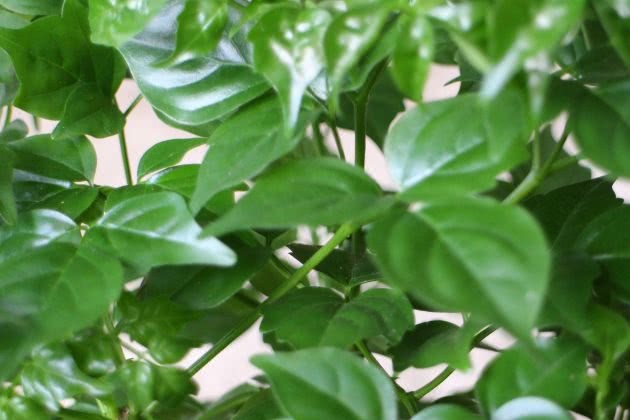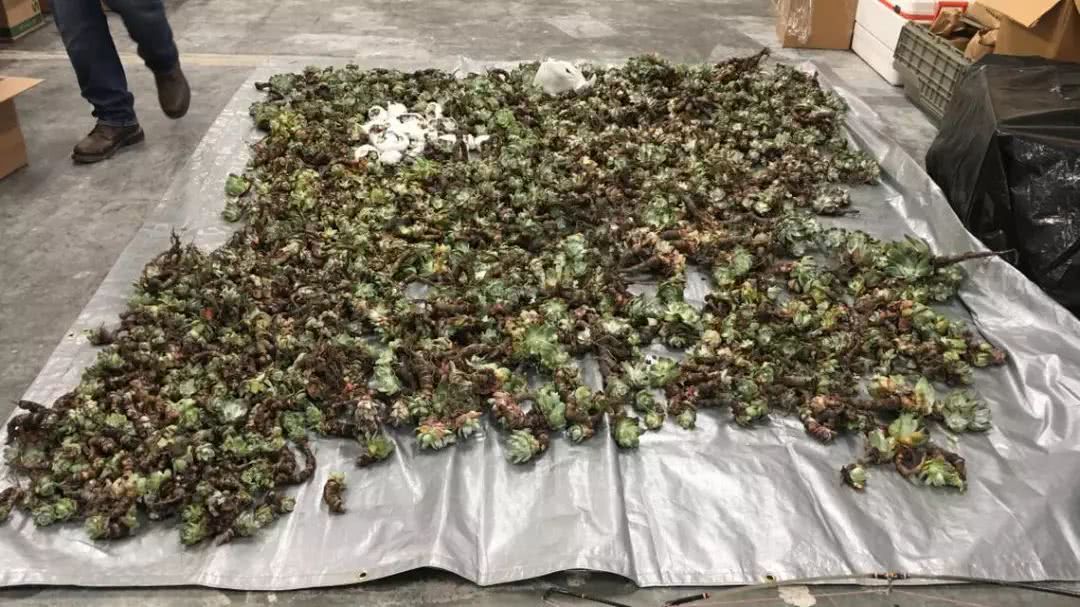The tree of happiness is often accompanied by such stout stems and green leaves.

The happiness tree is very easy to raise for people who have more experience in growing flowers, and it is not difficult in terms of daily maintenance, watering, fertilization, pruning, overwintering and spending the summer. but for many novice flower growers or people who are not good at summing up their own experience and discovering problems, breeding is more difficult.
Recently, when talking about how to water the happiness tree, a flower friend left a message: "my two pots first grew well, but now I don't know why the leaves turn yellow and black and wither and then fall, and one of the trunk is black and the whole tree is finished!" Some flower friends said, "if you raise three pots and wait on the princess every day, one pot feels great, but the remaining two pots don't seem to be able to live!" , "my family has developed a small umbrella. It grows on the top and falls off on the bottom, so it doesn't grow as fast as it does!" …… It seems that the happiness tree is more difficult to raise for many flower friends. So why do the leaves of the happiness tree turn yellow, black, dry and shedding? Today, Hua'er Valley will give you a brief introduction.
Happiness tree will appear a variety of poor growth conditions, we can be summarized as follows: 1, improper watering; 2, improper fertilization; 3, poor ventilation; 4, light discomfort; 5, diseases and insect pests.
1. Improper watering
Improper watering is a common reason for the yellowing of the leaves of the happiness tree. when the happiness tree is overwatered, it will cause the roots to lack oxygen, and in serious cases, it will cause the roots to rot, and the leaves will change from yellow to black and soft. then dry up and fall off. It can be seen that long-term overwatering is the number one killer leading to poor growth of the happiness tree! On the other hand, if the happiness tree grows in a water-deficient environment, the leaves will also turn yellow, which is mainly from the initial softening to yellowing to drying up, and there will be no blackening in the middle. Therefore, the poor growth of our happiness tree in the order of yellowing, softening, blackening, drying up and falling suggests that it may be overwatered.
2. Improper fertilization
The fertilization problems that can lead to the yellowing to blackening to the final withering and shedding of happy tree leaves are mainly caused by excessive fertilization, which is often caused by excessive fertilization at a time, or the appropriate amount of fertilizer fertilization cycle is too short, resulting in fertilizer damage. The common manifestation of excessive fertilization is that the leaves suddenly turn yellow, soften, blacken, dry, fall off or fall off directly after a single overfertilization. Excessive fertilization often shows the order of dark green, soft, yellowing, blackening and shedding of leaves. So we judge whether the happiness tree is overfertilized, we need to pay attention to the usual observation. If you suddenly see such a situation in the happiness tree after a fertilization, it is probably caused by fertilization. We can flood water to dilute or change soil to replant. As for whether it can be saved or not, it depends on the degree of fat damage to the roots.
3. Poor ventilation
Poor ventilation can lead to yellowing of leaves in happiness trees. The happiness tree will be raised in some relatively airtight space, poor air circulation will cause the happiness tree to show yellow leaves, blackening, dry and other phenomena. This is due to poor air quality, lack of oxygen, and muggy when the temperature is relatively high, which will cause poor plant growth and some damage in the breeding of bacteria. At this time, we can help it recover by changing a good ventilated environment in time.
4. Light discomfort
Light discomfort is often characterized by lack of light, such as long-term cultivation of happiness trees in a shady environment, which is easy to cause bacteria and lead to black rot of happiness trees. When we cultivate happiness trees, we need to maintain sufficient scattered light to prevent a series of problems caused by lack of photosynthesis caused by long-term shade.
5. Diseases and insect pests
The coal fouling disease of the happiness tree can also cause its leaves to turn yellow, black, dry and fall off. Especially in summer and autumn, coal pollution disease has a high incidence, which often harms the branches, leaves and stems of the happiness tree. If our happiness tree has dark brown mildew spots, it means it is infected with coal fouling disease. The prevention and treatment of coal fouling disease needs ventilation, replenishing light, and then using drugs such as stone-sulfur mixture, which can kill fungi.
The happiness tree problems caused by diseases and insect pests are generally difficult for beginners to deal with, and most flower growers will choose to give up. After all, this tree is raised in the family, and the use of drugs requires it to be put outdoors for spray control, which is relatively troublesome. However, if the conditions permit, we can try to prevent and cure it.
These are the common reasons and prevention techniques for the yellowing to blackening to withering to shedding of the leaves of the happiness tree introduced to you by Hua'ergu. Generally speaking, only when the occurrence of diseases and insect pests such as coal fouling disease, the stems and branches and leaves will appear some surface floating layer, other improper maintenance will not appear these phenomena. You can pay attention to judge when you encounter such a problem.
- Prev

Your hobbies and unconscious are destroying these species and ecology.
Preface follow Encyclopedia meet Beautiful (WeChat account: duoroubaike) text begins: thank the author [Mann Yong Cuo Stone] for original contribution sharing contribution date: June 29th 2018 Editor: encyclopedia coordinates: Beijing raise.
- Next

How to prune and learn how to prolong the flowering period of horseshoe lotus after flowering
Abstract: I believe everyone knows a lot about calla lilies, but you know that there are many kinds of calla lilies, and different varieties have different colors, so they have a lot of colors. Calla lilies are often raced.
Related
- Wuhan Hospital Iron Tree Blooming Result Was Instantly Frightened by the Gardener Master
- Which variety of camellia is the most fragrant and best? Which one do you like best?
- What is the small blue coat, the breeding methods and matters needing attention of the succulent plant
- Dormancy time and maintenance management of succulent plants during dormancy
- Minas succulent how to raise, Minas succulent plant pictures
- What are the varieties of winter succulent plants
- How to raise succulent plants in twelve rolls? let's take a look at some experience of breeding twelve rolls.
- Attention should be paid to water control for succulent plants during dormant period (winter and summer)
- Watering experience of twelve rolls of succulent plants
- Techniques for fertilizing succulent plants. An article will let you know how to fertilize succulent plants.

